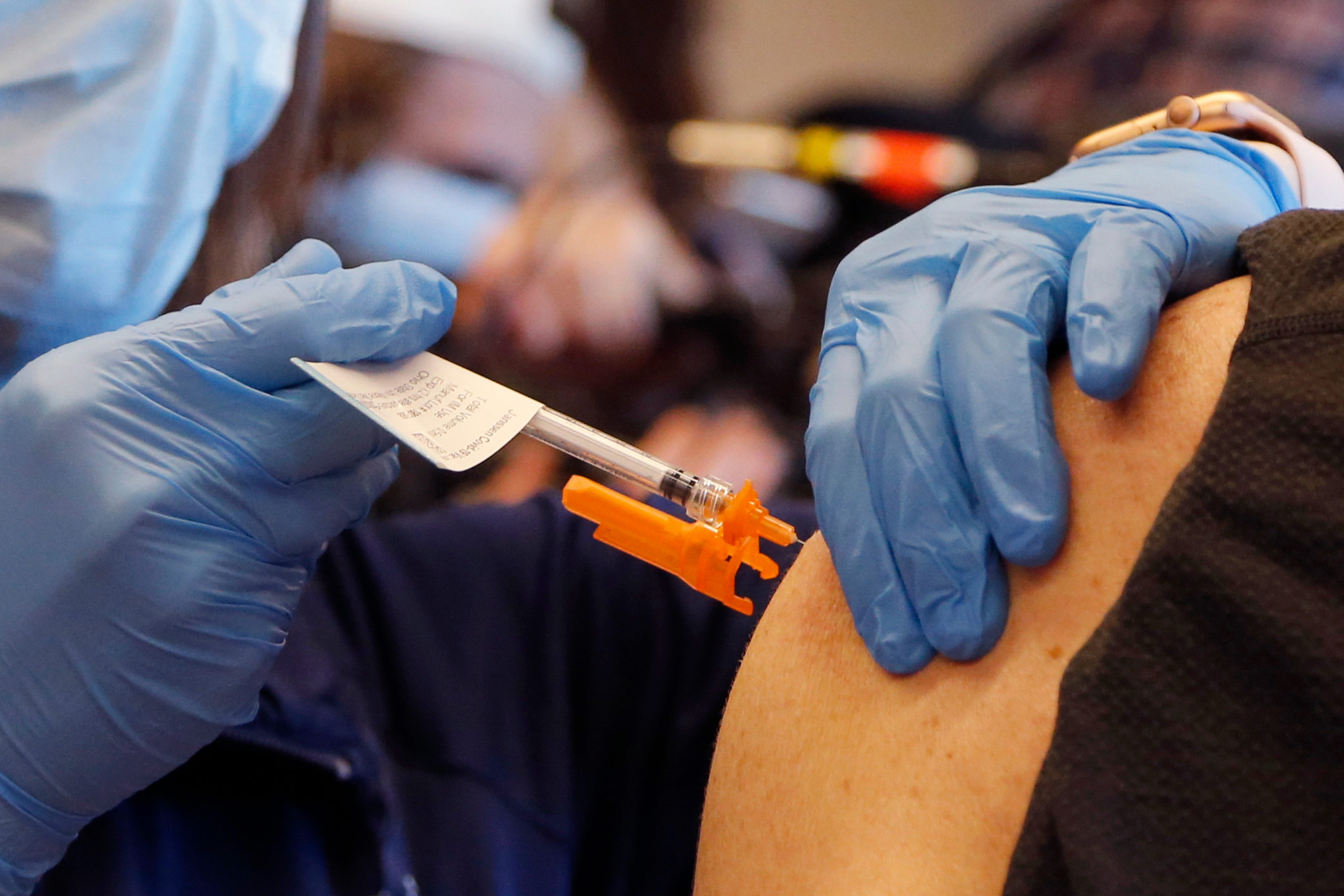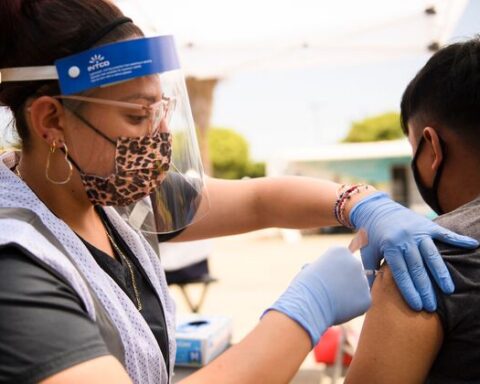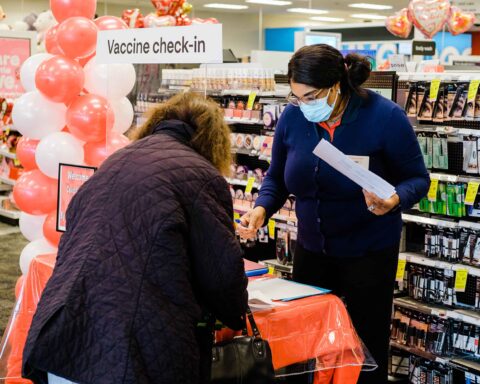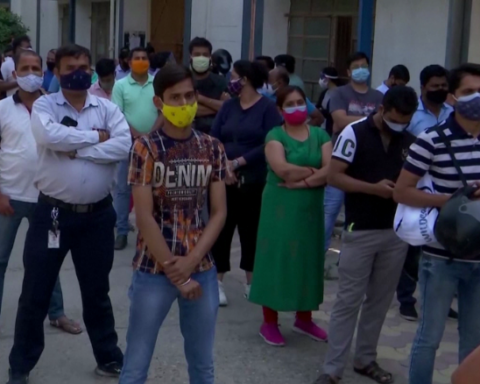Dutch Mandel’s cell phone lit up with messages: “It’s open, it’s open, it’s open!”
The 62-year-old South Carolina resident told CNN on Thursday that his friends and he — all older than 55 but younger than 65 — had been anxiously monitoring the South Carolina Department of Health and Environmental Control website for weeks to see when the state would open up Covid-19 vaccinations for their age group.
On Tuesday, their wait came to an end.
After months of vaccinating frontline health care workers and people 65 and older, the state announced plans to begin vaccinating adults 55 and older starting on March 8. Mandel found out from the text messages he received.
“Early on, particularly in South Carolina, there were a lot of naysayers, but I was confident that I would be able to get a shot by March,” Mandel said. “I bet somebody $100 that I would do that and it looks as though that’s going to happen.”
South Carolina is not the only state now moving to vaccinate people younger than the average retirement age in the United States.
Just days after the US Food and Drug Administration authorized the Johnson & Johnson coronavirus vaccine for emergency use — marking the nation’s third vaccine against Covid-19 — more states began expanding eligibility for vaccination to adults in their 50s.
That will mean more people scrambling for vaccination appointments and perhaps some confusion as to which states are shifting their guidance, but ultimately there will be more people protected from a virus that has sickened more than 28 million and led to more than 520,000 deaths in the United States.
More states to vaccinate those in their 50s
The state of Arizona on Monday expanded its vaccination criteria to include adults ages 55 and older. Ninety percent of deaths from Covid-19 in Arizona have been in this age group, according to a statement from the office of Arizona Gov. Doug Ducey on Monday.
“Continuing to vaccinate older Arizonans against Covid-19 will help protect those at risk and cover a majority of Arizonans with chronic medical conditions,” Ducey said in part in the statement.
Ducey’s office noted that local health departments in the state can transition to vaccinating younger adults when they either reach 55% of the current eligible ages having been vaccinated or they feel that there is no longer demand for the vaccine among the currently eligible ages.
On Wednesday, Alaska expanded its vaccination criteria to include adults ages 55 and older, while the states of West Virginia and Indiana expanded eligibility to adults 50 and older.
“With the new J&J approval, we’re obviously able to do more,” Indiana Gov. Eric Holcomb said on Wednesday during a briefing, referencing the newly authorized Johnson & Johnson Covid-19 vaccine. Holcomb said the state will continue to drop vaccine eligibility based on age, ultimately to age 40.
Utah and South Carolina plan to vaccinate adults ages 55 and older starting on March 8.
“In the month of February, South Carolina made tremendous progress on expanding access to vaccinations as the supply of vaccine increased. Our hospitals, pharmacies and healthcare providers became more nimble and efficient at getting shots in arms,” South Carolina Gov. Henry McMaster said in a news release about the state’s new vaccination plans on Tuesday.
“Because of these successes, we’re now in a position to make the majority of South Carolinians eligible to receive the vaccine,” he said.
Tom Hudachko, a spokesperson for the Utah Department of Health, told CNN on Thursday that Utah’s move to expand eligibility for the vaccine to younger adults stems from several factors, including getting additional doses and a decrease in demand in the currently eligible groups.
In Michigan, the state plans to vaccinate all adults 50 and older starting March 22, and the state noted in an announcement on Wednesday that to date, more than 40% of Michiganders ages 65 and older have been vaccinated.
These expansions are “a positive sign” for public health, said Lori Tremmel Freeman, chief executive officer of the National Association of County and City Health Officials.
“When you’re talking about some states moving on to vaccinating people over 50, that’s a positive sign that they have saturated the previous priority group and are expanding — so that’s all good news and that will happen very rapidly and naturally with the expansion of supply chain as well,” Freeman told CNN on Thursday.
Health officials expect more doses
The US vaccine supply is expected to keep increasing in the coming weeks, she added.
“We had 2.8 million doses of Johnson & Johnson out the door in this first week for a total of 18 million doses that are inclusive of all three of the vaccines,” Freeman said, referring to the Pfizer and Moderna Covid-19 vaccines, as well as Johnson & Johnson.
“We will start to see by the end of March, beginning of April, Johnson & Johnson being part of the larger picture of the overall doses,” Freeman said. “Then as we head into April, we’ll be up to 22 to 24 million doses through these distribution channels to state and local governments.”
In total, about 82.6 million doses of Covid-19 vaccine have been administered in the United States, according to data published Thursday by the US Centers for Disease Control and Prevention. That number marks about 75% of the more than 109 million doses delivered.
That’s about 2 million more administered doses reported since Wednesday, for a seven-day average of more than 2 million doses per day.
President Joe Biden said on Tuesday the United States would have enough Covid-19 vaccine doses for every adult American by the end of May, dramatically accelerating his timeline but acknowledging the country must still be vigilant against the virus.
“I think that with the current administration’s attention to this, not only will we be on a road to recovery from a physical and health perspective, but so too from an economic perspective and I couldn’t be happier,” said Mandel, who is anxiously awaiting his vaccine in South Carolina.
Some states are not only expanding eligibility for Covid-19 vaccines to include younger ages, but to include other specific groups of people too. For instance, as of Thursday afternoon, there are 38 states where teachers are eligible for Covid-19 vaccines.
Since Biden announced that it’s his priority to have all teachers receive at least their first dose of the Covid-19 vaccine by the end of this month, several states have either opened up to teachers immediately, or have announced the dates they will start, including several that started allowing teachers this week.
Among the remaining 12 states where teachers currently are not eligible, Georgia, South Carolina and Vermont plan to start vaccinating teachers on March 8. Missouri and New Jersey plan to start vaccinating teachers on March 15.
As more states expand their criteria for Covid-19 vaccinations, residents can expect to see more efforts to ensure that vaccinations are being administered equitably and fairly, Freeman said.
The office of California Gov. Gavin Newsom announced on Thursday that the state has set aside 40% of its vaccine doses for the hardest-hit communities.
And in Tennessee, Freeman said, they’re using social vulnerability index measures.
“In that particular case,vaccine distribution is being targeted into communities that have socioeconomic conditions that make health harder in general. So that’s one example, and there are others like it,” she said. “We have got to pivot from some of these prioritization groups, or within these prioritization groups, if we really mean for this vaccine distribution to be equitable … and we need to do it quickly.”
As state and local governments receive more doses of the vaccine, health officials and activists are sounding the alarm about the need for better planning and outreach in vulnerable communities.
Monica Spoch-Spana, a senior scholar at the Johns Hopkins Center for Health Security, said in February that while jurisdictions wait for more doses to arrive, they can plan for how best to reach underserved areas. Spoch-Spana and other researchers at Johns Hopkins published a February report highlighting the ways local and state governments can work with communities of color to ensure greater equity in vaccine distribution — including having community members involved in the distribution process and
“There may be a scarcity of product,” she said, “but there is not a scarcity in terms of opportunities to connect with organizations that have roots in these communities to jointly develop a delivery system that is going to work for these segments of society.”
The hunt for appointments
Freeman said that her organization previously heard about some people crossing county or state lines to access vaccines in communities where they were eligible to get vaccinated — but not where they lived. In January, one Covid-19 vaccination site in a predominantly Latino neighborhood in New York City hard hit by the pandemic saw an overwhelming number of White people from outside the community show up to get the vaccine, city leaders said.
“There was no real guidance or restrictions early on in the distribution,” Freeman said about people traveling for vaccines.
“We saw pretty quickly a clamp down on registration systems requiring some sort of proof of residency in some cases or you had to provide your ZIP code,” she said. “But some of these measures are simply in place because we have limitations on supply — those will go away when we have enough supply to vaccinate every adult.”
For instance, proof of Indiana residency is required to get a vaccine in Indiana, Megan Wade-Taxter, a spokesperson for the state told CNN in an email on Thursday.
Meanwhile, there are no residency requirements for South Carolina, the State Emergency Response Team said in an email on Thursday.
Mandel, based in South Carolina, hopes to find a way to schedule an appointment sometime before March 8 — when the state plans to begin vaccinating adults 55 and older — if he’s lucky. Whatever the case, he is confident he will get vaccinated before the month ends and possibly collect $100 from his winning bet.
“Worst case, Sunday afternoon, I’m going to be looking to see whether or not they open up for the next day at CVS and Walgreens,” he said. “I will have my phone in my hand and my computer on my lap, ready to go.”





